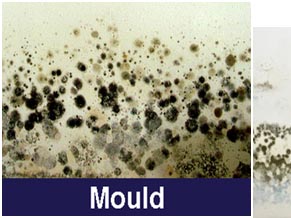We know pollution isn’t just a menace outdoors. Indoor air pollution is a health concern in all major Indian cities today as well. The air inside our homes can get toxic due to the pollution outside as well with elements like smoke, chemicals and biological pollutants that include living organisms and allergens. Most of these pollutants and allergens are present in every home, even in one that looks spotless on the surface. Therefore, it’s essential to take adequate precautions and improve the indoor air quality by minimizing or controlling the entry of such pollutants. Here is a guide to help you to identify the sources of indoor pollution and take steps to minimize their effects.
- Dust

While open windows bring in natural light and fresh air, they’re also a major entryway for dust and outdoor pollutants like smog into your home. So make it a point to close the windows after the morning hours, dust and vacuum the house regularly and consider air purifiers with HEPA filters (high-efficiency particulate air) that can potentially trap some of the pollutants. These measures are an effective way to improve the indoor air quality in your home.
- Kitchen Smoke

The smoke generated from cooking is a prime source of indoor air pollution. It is important to have proper natural ventilation and an exhaust fan as well as a chimney to prevent accumulation of any kind of pollutants within the kitchen and its surrounding areas. Since smoke is also generated from barbecues, place them only in outdoor areas.
- Mould and Dust Mites

High humidity, dark spaces and dampness are ideal conditions for any kind of mould growth. Areas like bathrooms, flooded basements, damp carpets, attics and leaky pipes can be conducive to mould growth. Dust mites mainly live in the mattresses of beds, in pillows, within heavy blankets, curtains and fabric-upholstered sofas and chairs. They feed on dead skin cells, fungi, bacteria and pet dander. Their biological waste adversely affects the indoor air environment.
Good ventilation can considerably reduce the presence of dust mites and mould. If possible occasionally sun the mattress and pillows, and beat or shake them.
- Pet Danger

Pets like dogs and cats shed their hair and release skin flakes, also known as dander. If you have pets, it’s advisable to clean and mop the floors at least twice a day, regularly damp-wipe the walls from top to bottom and vacuum-clean your sofas and beds regularly. While it might not be possible to fully eliminate dander, these steps can help control its spread.
- Pollen grains
Pollen can primarily make entry into your home through open windows, doors, balconies, outdoor sit-outs and also through shoes and clothing. If you suffer from pollen allergies, it’s best to have windows and doors closed during the summer and spring season. Keep footwear, raincoats and umbrellas in your entrance foyer to prevent the spread of pollen into your main living spaces.
- Tobacco Smoke
It is strongly recommended to limit smoking to outdoor areas, especially if you have small kids around. Also ensure that there is enough cross ventilation to prevent build up of any kind of harmful chemicals and reduce the concentration of pollutants within interior spaces.
VOCs are hazardous compounds that are released by a host of common household and personal care products like scented paraffin candles, perfumes, hairspray, furniture polish, glues, air fresheners, mosquito repellents, nail polish removers and cleaning agents. VOCs can cause a multitude of health problems, including skin irritation, and can sometimes be carcinogenic too. To minimize the level of VOCs within your home, opt for organic or natural-based household cleaners and pest repellents, and use natural oils as room fresheners.



















Your Message